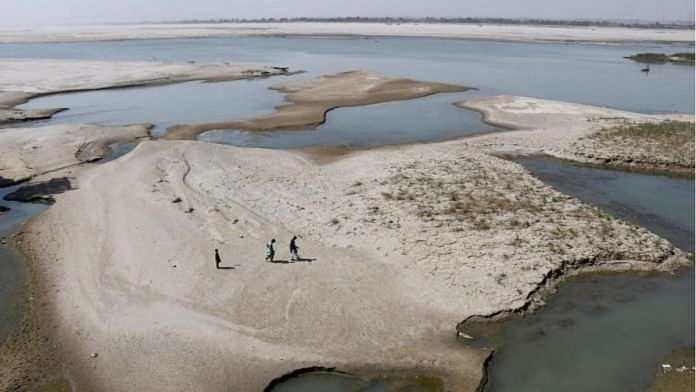Brokered by the World Bank, the IWT was signed in Karachi on 19 September 1960 by Jawaharlal Nehru and Field Marshal Ayub Khan. India received full control of the eastern rivers—the Sutlej, Beas, and Ravi—while Pakistan was vested with near-exclusive use of the Indus, Jhelum, and Chenab.
Less well known is that still allowed India 3.6 million acre-feet (MAF) of consumptive use on the western rivers: 1.25 MAF for irrigation and domestic supply, 1.6 MAF for hydropower pondage, and 0.75 MAF for flood moderation. Yet, in 65 years, barely 0.2 MAF of that entitlement has been developed.
Even on the Ravi—legally India’s to the last drop— sizeable flows continued to escape into Pakistan until the Ranjit Sagar Dam came online in 2000, and significant volumes still do because downstream works—above all, the Shahpur Kandi Dam project—were mired in interstate wrangling.
Although drafted for “indefinite duration,” the treaty contains no clause forbidding suspension. Mohan Katarki, senior Supreme Court advocate and veteran water-disputes counsel, emphasises that under general international law, a sovereign may hold a treaty in suspense when extraordinary circumstances threaten core national interests.
India, therefore, faces no enforceable compulsion to obey arbitral rulings that undermine its security. Any hostile award would take years to mature and would be virtually unenforceable: long before paper judgements appear, Pakistan will confront the arithmetic of dwindling canal flows.
As shortages bite, Pakistan’s canal colonies will quarrel—Sindh against Punjab, upper Punjab against lower Punjab, and Balochistan resentful of them all. Islamabad, financially ruined and diplomatically isolated, will return to the table. India, if it then chooses to engage, will negotiate from a position of unambiguous strength.
Suspension by itself alters no hydrograph; engineering must follow politics. The first priority is to finish projects already permitted under the treaty:
Next come schemes newly feasible once procedural vetoes vanish:
Together these works promise roughly 4 MAF of additional storage or diversion, 3 GW of new hydropower and irrigated command exceeding 3,00,000 hectares.
To implement this agenda, ad-hoc committees will not suffice. India needs a National River Infrastructure Authority, modelled on the National Highways Authority of India, with statutory powers, its own engineering cadre and a dedicated corpus.
Such a body would cut through inter-ministerial lag, deliver standard designs and supervise contracts across civil construction, power generation and tunnelling—all on a war-footing.
Punjab draws barely 27 per cent of its irrigated area from canals; the rest comes from tubewells that are collapsing the water-table. Jammu, Kashmir, and Ladakh remain under-electrified and under-irrigated despite glacial bounty. Harnessing the western rivers will, therefore, integrate these regions more powerfully than constitutional clauses ever could, bringing saffron fields, apple orchards, and rain-shadow valleys into the national mainstream.
Doubters label suspension “weaponisation” of water. The truth is starker: India is merely ending a charity that long nourished an adversary determined to wound us. Sovereignty is not aggression; self-preservation is not weaponisation.
No one pretends colossal dams rise overnight. Building a response that effectively cuts Indus waters to Pakistan could take a decade or so. Yet, with Prime Minister Narendra Modi’s political ballast and Home Minister Amit Shah’s hands-on coordination, India now possesses the will, the foreign-exchange reserves, and the engineering talent to realise this vision. The Rubicon—indeed the Indus—has been crossed. What remains is to roll in the excavators, pour the concrete and turn six decades of restraint into a new epoch of sovereign water stewardship.
(Edited by Prashant)








